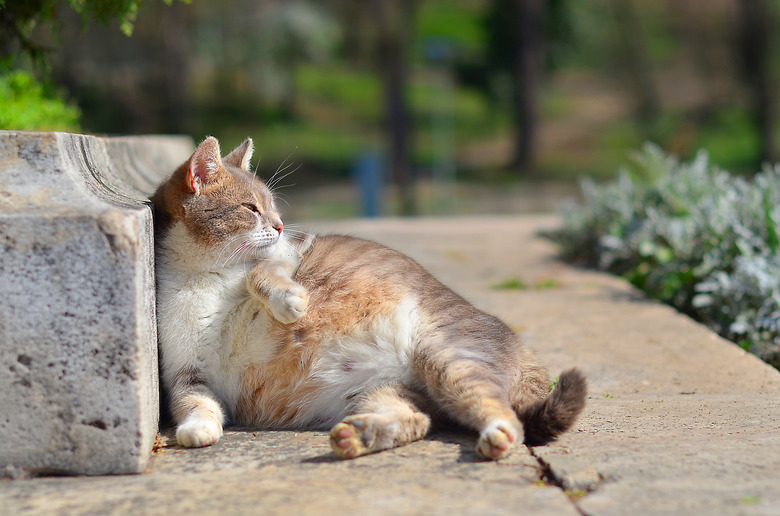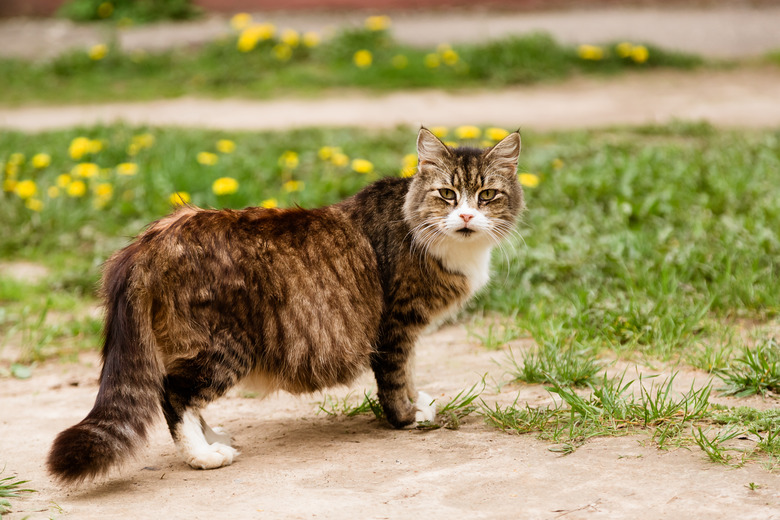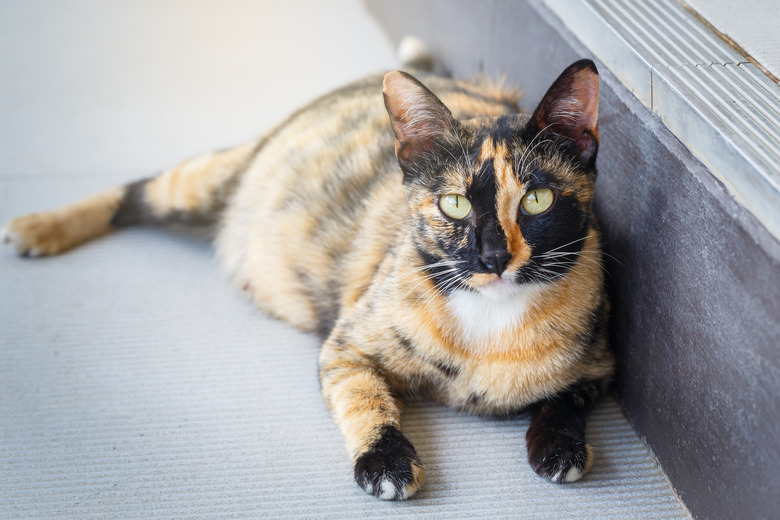How To Comfort A Cat In Heat
Have you noticed your cat yowling in the middle of the night or being uncharacteristically demanding of affection? She might be in heat (and you might be very, very tired from the lack of sleep). This is inevitable for female felines who aren't spayed, but male cats also experience their own type of heat. For example, you might find your male cat is more apt to fight or mark its territory with small amounts of urine once it reaches maturity, but female heat — also known as the estrous cycle — is a seasonal occurrence and can be quite uncomfortable for your feline.
Spaying your cat is the only way to ensure she never experiences an uncomfortable estrous cycle. This is typically recommended by veterinarians because it also helps prevent cat overpopulation, and shelters are notoriously overrun with strays. In just seven years, a pair of cats and their offspring can produce 420,000 kittens. That's no small number, but even if you choose not to spay your pet, there are some ways you can help comfort her when she's in heat.
When cats go into heat
When cats go into heat
Your cat's estrous cycle can begin as early as six months old and typically occurs multiple times within a single breeding season. This season varies depending on where you live, the temperature, and the amount of daylight. Typically, in the United States, cats have estrous cycles between January and late fall (basically, when the weather starts getting warmer and the days start getting longer). For indoor cats or cats in warm climates, the breeding season may be year-round.
Your cat's specific physiology also dictates when it will go into heat. Cats must be a minimum weight to have an estrous cycle, and certain breeds enter puberty earlier than others. For example, Siamese cats tend to hit puberty faster than Persian cats. If your cat is in heat, you may notice that she:
- Is uncharacteristically affectionate
- Persistently rubs against you and demands affection
- Rubs against objects in your house or rolls around on the floor
- Yowls, cries, or is otherwise uncharacteristically vocal
- Raises her rear when her spine is stroked and treads in place with her back paws
- Bleeds from her vagina
- Urinates more frequently or urinates around the house (i.e. marking objects)
- Tries to escape your house
You may also notice tomcats (unneutered male cats) visiting your property. Typically, an estrous cycle lasts several days. If she doesn't mate, she'll fall in and out of heat consistently during the breeding season. The complete estrous cycle can last between one to six weeks.
Calming a cat in heat
Calming a cat in heat
Many pet owners find that — as much as you may love your pet — cats in heat are both annoying and destructive. That mostly happens because they're uncomfortable. Thankfully, there are ways to help ease your cat's complicated (and often aggravated) emotions during her estrous cycle.
First, it's important to isolate your cat. Put her in a room without any other pets and close the curtains so she can't see any potential male suitors who may be roaming around the backyard. If you allow your cat outside or there's a way inside through something like a pet door, she may try to mate with a neighborhood tomcat.
Next, keep her warm and distracted. Put a heating pad or blankets in her cat bed and give her a bunch of toys. You may also want to spend some extra time playing with her to tire her out and keep her mind off mating. You can also ask your vet about synthetic progesterone injections (i.e. kitty birth control) which will help prevent her from entering heat.
Spaying your cat
Spaying your cat
Unless you are a professional breeder, veterinarians generally recommend that you have your cat surgically sterilized through a spay operation or ovariohysterectomy before she has her first estrous cycle. This prevents the uncomfortable symptoms that come with being in heat. The operation is covered by some types of pet insurance, and cats generally heal in a couple of weeks.
Most vets recommend sterilizing your cat once she reaches six months of age. If your cat is older and has already experienced an estrous cycle, it's best to wait until the cycle is over to avoid complications.
References
- VCA: Estrous Cycles In Cats
- Animal Rescue Professionals: Two Cats Can Turn Into 420,000 Kittens
- Affinity: Cat In Heat
- Catological: How To Help Calm Down A Cat In Heat: Helping To Remedy Both Male And Female Cats' Difficult Time
- Journal of Feline Medicine and Surgery: Progestines to Control Feline Reproduction


